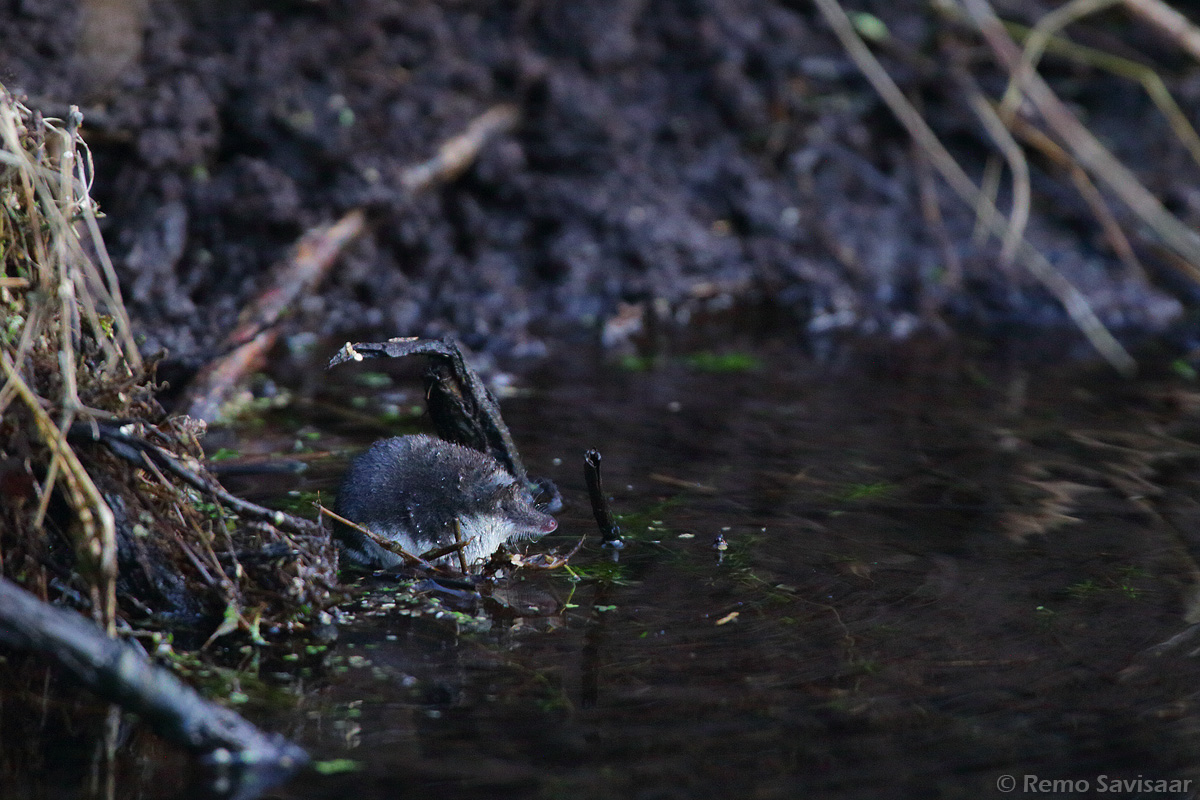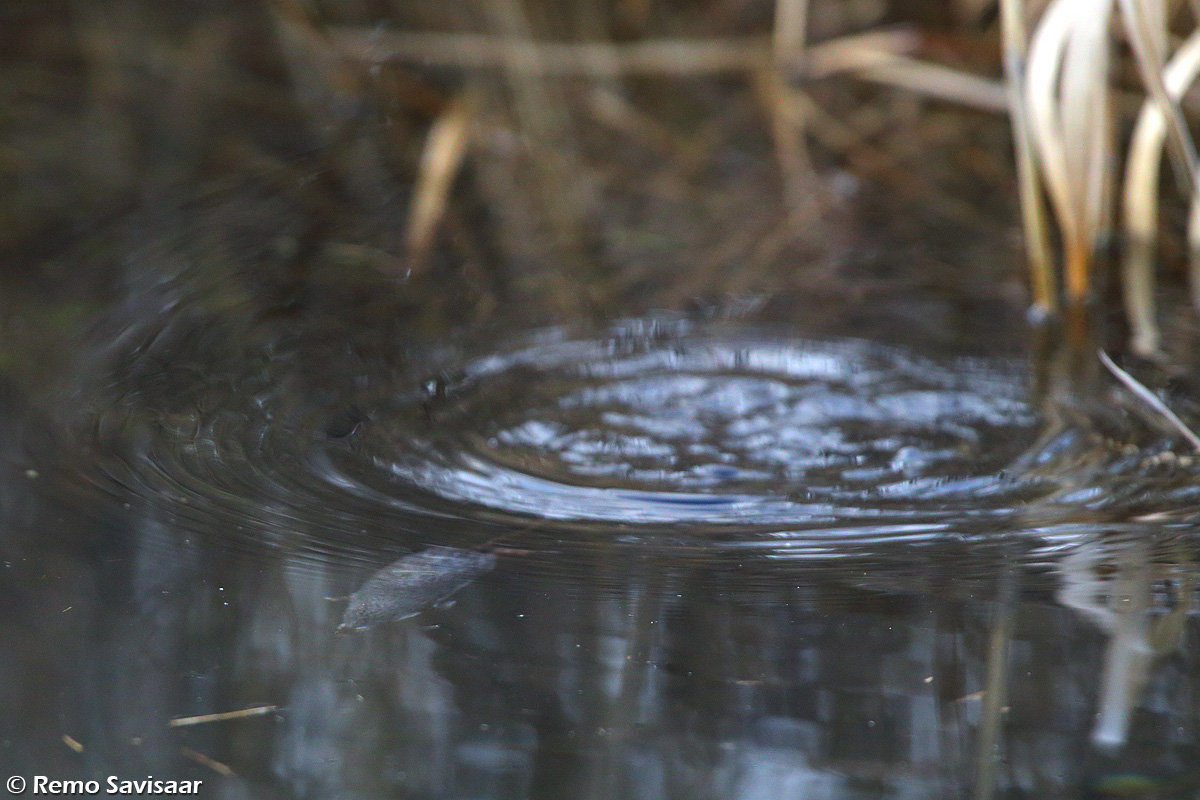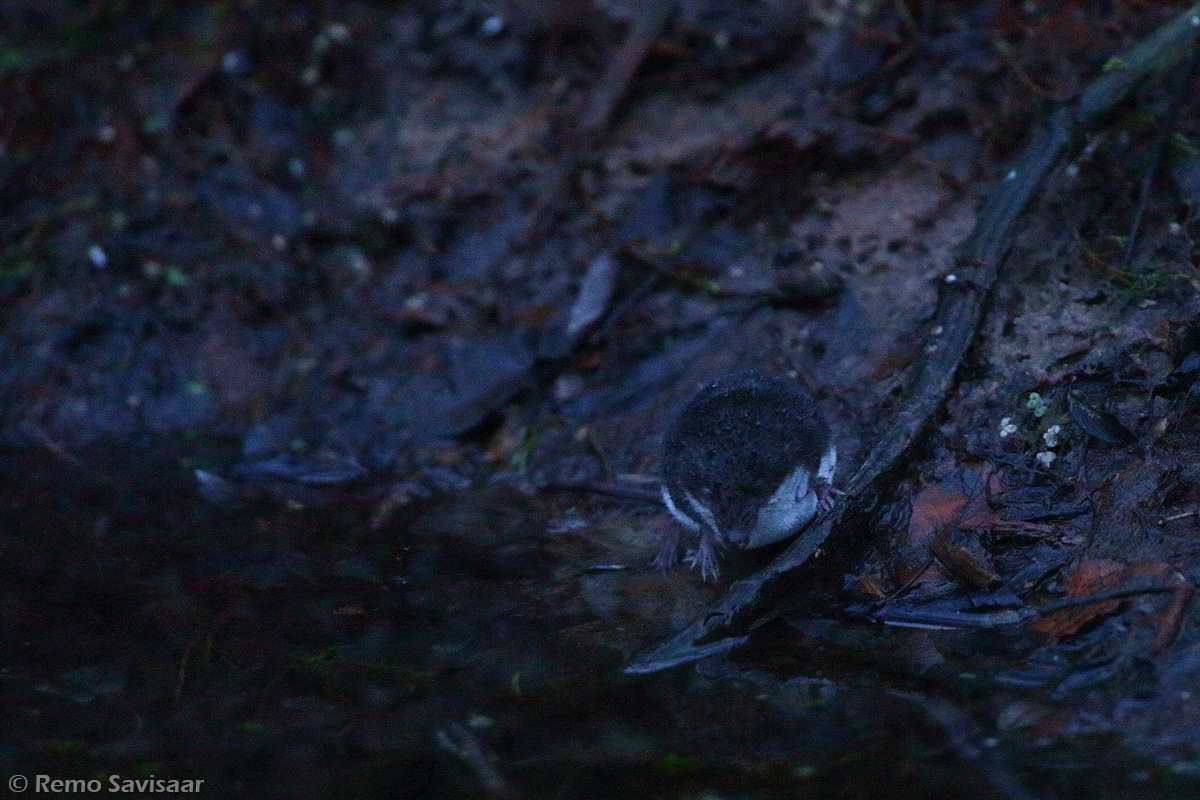The water shrew is a enigmatic and shy animal that most people never have even heard about. This small mammal is however definitely present in our nature and moreover quite common!
I clearly remember my first encounter with a water shrew – it took place behind a beaver dam where I was stalking a kingfisher. The beaver had dammed the water in a small stream. Lying there for hours I noticed that a very small, agile creature was busy in the water. The top of its head touched the water surface only for a moment when it dived again. Who was it? Finally I managed to see the little animal – looking like a shrew but liked to move in water. Getting home with this information I started to search in books and I did find it in the Soricidae family – it was a water shrew!

Author of photo: Remo Savisaar
Shrews are the smallest mammals in the world, with a body weight of 2,5-

The water shrew is present all over

The water shrew is an insectivore, eating water insects and their larvae, crustaceans, worms, snails, fish and smaller amphibians. The water shrew also has a secret weapon – it is one of the few mammals with poisonous saliva. With the saliva it paralyses larger prey animals. The prey is then brought up on land and is eaten in a specific feeding place. I have managed to observe how a water shrew brought out a drowsy brown frog much larger than itself from the bottom mud, dragging it to the bank. After that it went away and I thought that maybe it went to call its young to eat. The daily food intake need of a water shrew is about 50% of its body weight. During the time that the shrew was absent, about two or three minutes, the frog left! When the shrew returned it looked around, puzzled, and set out to search for the frog but did not find it again.

The water shrew has an ideal colour for activity on the shore – it is only revealed by the white underside and the brisk action mode.
The water shrew has a solitary way of life and like other shrews it is active throughout the year. Its breeding period lasts from April to September; during that time at least two litters are born. There are 3-15 young that weigh about
Remo Savisaar



